Why You’ll Never Escape From A Black Hole
Once you cross the event horizon, you’ll never go back.
“They say ‘A flat ocean is an ocean of trouble. And an ocean of waves… can also be trouble.’ So, it’s like, that balance. You know, it’s that great Oriental way of thinking, you know, they think they’ve tricked you, and then, they have.” –Nigel Tufnel
Black holes* are some of the most perplexing objects in the entire Universe. Objects so dense, where gravitation is so strong, that nothing, not even light, can ever escape from it. Overhyped recent developments notwithstanding, this is very much universally accepted.

Many physical black holes have been identified, from stellar-mass scale ones in our own galaxy to supermassive ones at the centers of the majority of galaxies, many millions or even billions of times the mass of our Sun. At the center of our own galaxy, we’ve been able to observe the motions of stars around a central point mass with a mass around 4 million solar masses that emits no light at all. This is a surefire candidate for a black hole.
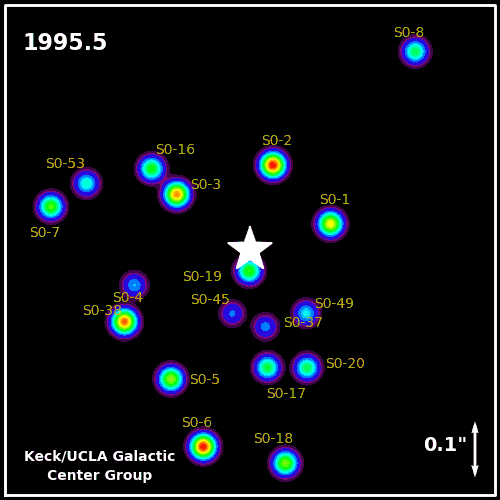
But there are a number of very counterintuitive things that happen as you get near a black hole’s event horizon, and a very, very good reason why once you cross it, you can never get out! No matter what class of black hole you fell into, not even if you had a spaceship capable of accelerating in any direction at an arbitrarily large rate.
It turns out that General Relativity is a very harsh mistress, particularly when it comes to black holes. It goes even deeper than that, mind you, and it’s all because of how a black hole bends spacetime.

When you’re very far away from a black hole, the fabric of space is less curved. In fact, when you’re very far away from a black hole, its gravity is indistinguishable from any other mass, whether it’s a neutron star, a regular star, or just a diffuse cloud of gas. Spacetime may be curved, but all you can tell at your distant location is that it’s due to the presence of a mass, not what the properties or distributions of that mass are.
But if you looked with your eyes, instead of a gas cloud, star or neutron star, there would be a completely black sphere in the center, from which no light will be visible. (Hence the “black” in the moniker “black holes.”)
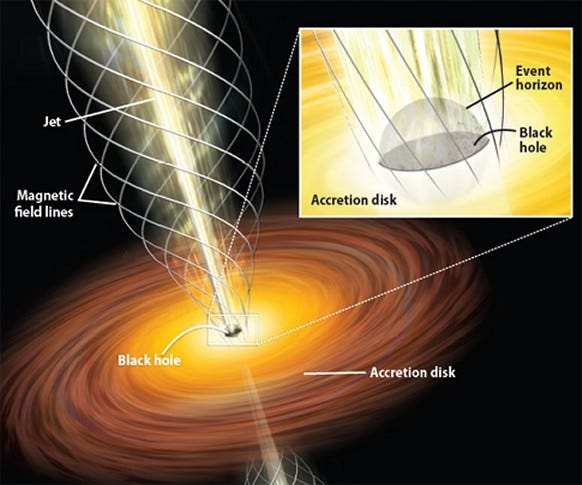
This spherical region, known as the event horizon, is not a physical entity, but rather a region of space — of a certain size — from which no light can escape. From very far away, it appears to be the size that it actually is, as you’d expect.
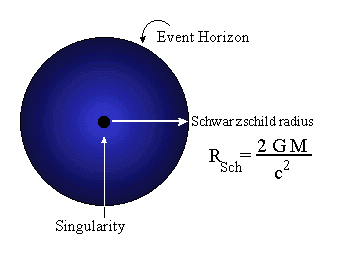
For a black hole the mass of the Earth, it’d be a sphere about 1 cm in radius, while for a black hole the mass of the Sun, the sphere would be closer to 3 km in radius, all the way up to a supermassive black hole — like the one at our galaxy’s center — that would be more like the size of a planetary orbit or a red giant star like Betelgeuse!
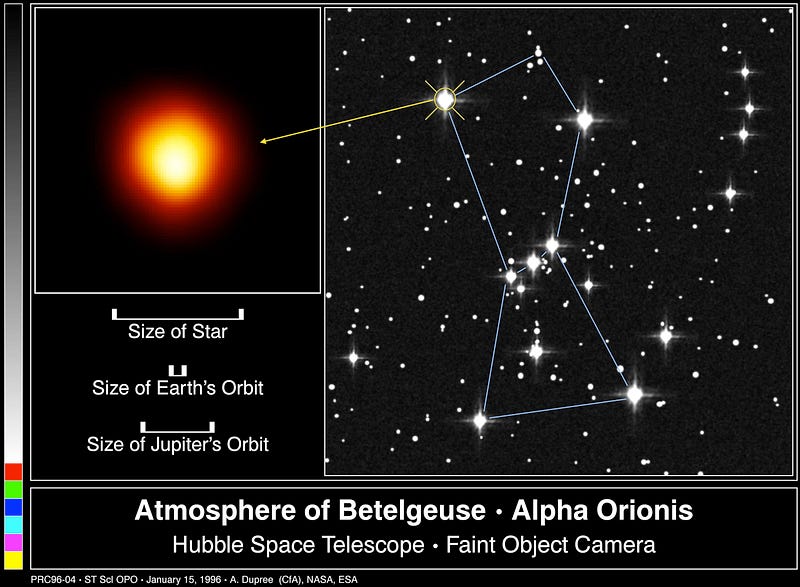
From a great distance away, the apparent geometry of what you see works just like you’d expect, matching your calculations. But as you travel, in your perfectly equipped, indestructible spacecraft, you start noticing something strange as you approach this black hole. Unlike all the other objects you’re used to, where they appear to get visually larger in proportion to the distance you are away from them, this black hole appears to grow much more quickly than you were expecting.
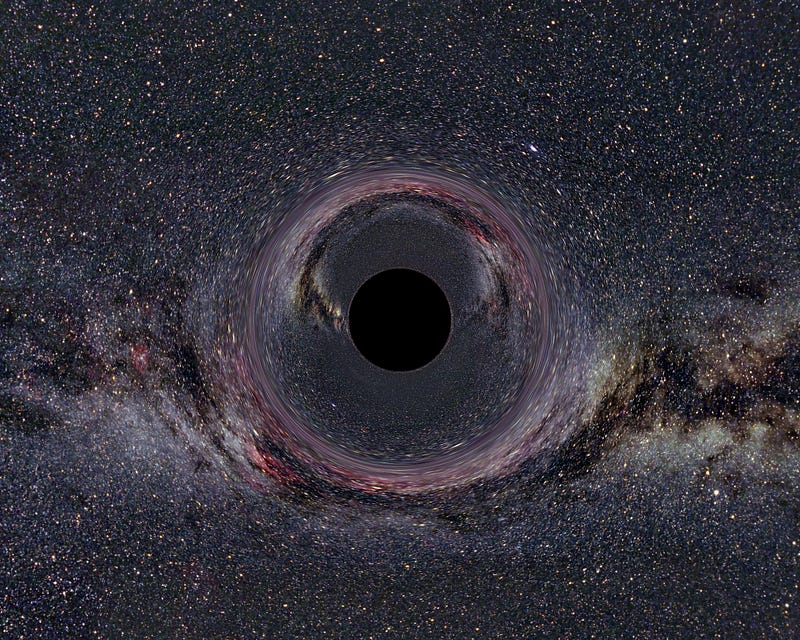
By time the event horizon should be the size of the full Moon on the sky, it’s actually more than four times as large as that! The reason, of course, is that spacetime curves more and more severely as you get close to the black hole, and so the “lines-of-light” that you can see from the stars in the Universe that surround you are bent disastrously out of shape.
Conversely, the apparent area of the black hole appears to grow and grow dramatically; by time you’re just a few (maybe 10) Schwarzschild radii away from it, the black hole has grown to such an apparent size that it blocks off nearly the entire front view of your spaceship. That’s a huge disparity from just a geometrical object like that in uncurved space, which would appear to be about the size of your fist held at arms length.
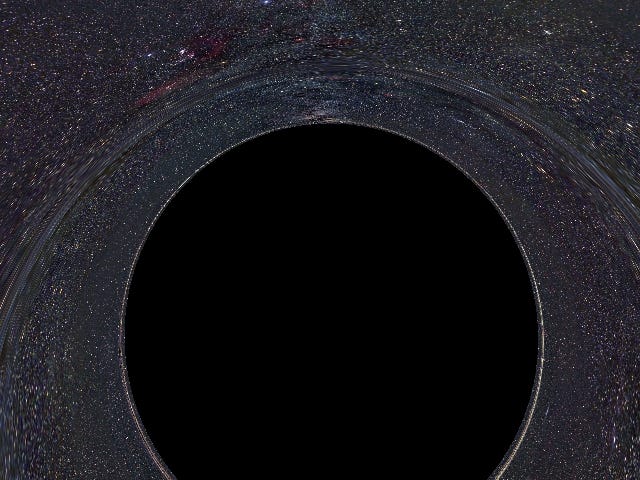
As you start to come closer and closer to the event horizon, you notice that the front-view from your spaceship becomes entirely black, and that even the rear direction, which faces away from the black hole, begins to be subsumed by darkness. (This treatment assumes that there’s no other matter falling into the black hole either ahead of you or behind you.) The entirety of the Universe that’s visible to you begins to close off in a shrinking circle behind you.
Again, this is because of how the light-paths from various points travel in this highly bent spacetime. For those of you (physics buffs) who want a qualitative analogy, it begins to look very much like the lines of electric field when you bring a point charge close to a conducting sphere.

At this point, having not yet crossed the event horizon, you can still get out. If you provide enough acceleration away from the event horizon, you could escape its gravity and have the Universe go back to your safe, far-away-from-the-black-hole, asymptotically flat spacetime. Your gravitational sensors can tell you that there’s a definite downhill gradient towards the center of the blackness and away from the regions where you can still see starlight.
But if you continue your fall towards the event horizon, you’ll eventually see the starlight compress down into a tiny dot behind you, changing color into the blue due to gravitational blueshifting. At the last moment before you cross over into the event horizon, that dot will become red, white, and then blue, as the cosmic microwave and radio backgrounds get shifted into the visible part of the spectrum for your last, final glimpse of the outside Universe, still assuming that nothing else falls in with you.

And then… blackness. Nothing. From inside the event horizon, no light from the outside Universe hits your spaceship. You now think about your fabulous spaceship engines, and how you can attempt to get out. You recall which direction the singularity was towards, and sure enough, there’s a gravitational gradient downhill towards that direction.
But your sensors tell you something even more bizarre: there’s a gravitational gradient that’s downhill, towards a singularity, in all directions! The gradient even appears to go downhill towards the singularity directly behind you, in the direction that you knew is opposite to the singularity! How is this possible?

Because you’re inside the event horizon, and even any light beam (which you could never catch) you now emitted would end up falling towards the singularity; you are too deep in the black hole’s throat! How long would you have? Believe it or not — despite the fact that we’re talking about an event horizon that might be around a light-hour in diameter in our reference frame — it would only take around 20 seconds to reach the singularity once you crossed the event horizon. Severely curved space sure is a pain!
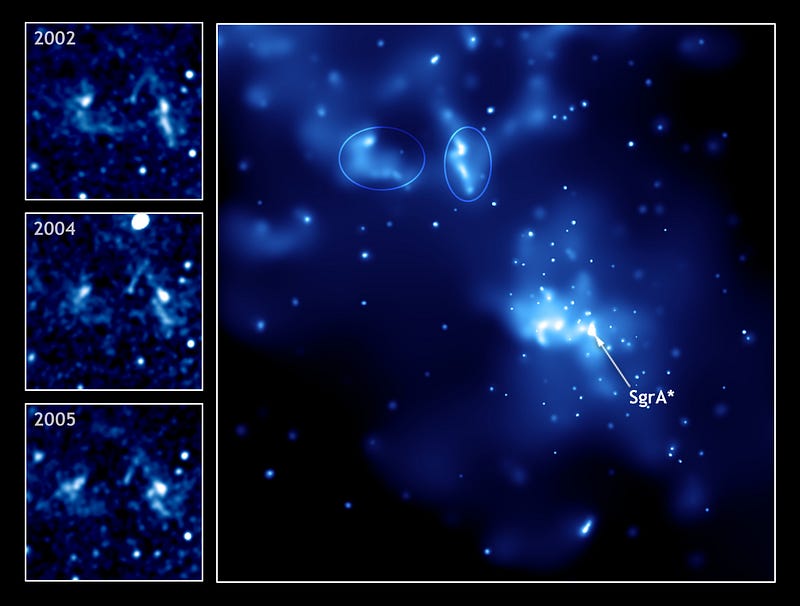
What’s worse is that any acceleration you make, assuming you free-fell in from rest (other assumptions are slightly different), will take you closer to the singularity at an even faster rate! The way to maximize your survival time at this point — and it’s not very long, no matter what — is to not even try to escape! The singularity is there in all directions, and no matter where you look, it’s all downhill from here.
General Relativity is a harsh mistress, particularly when it comes to black holes.
(* — This is all done for a non-rotating, or Schwarzschild black hole. Other forms of black holes are similar, but slightly different, and much more complicated, quantitatively.)
An earlier version of this post originally appeared on the old Starts With A Bang blog at Scienceblogs.





